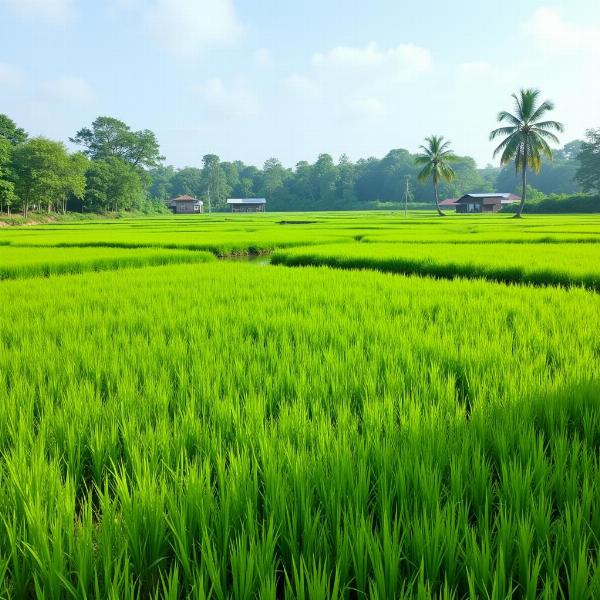Chawa, often misspelled as “chawa,” doesn’t have a direct meaning in standard Hindi. The correct term for rice in Hindi is “chawal” (चावल). Understanding the meaning of chawal is essential for anyone interested in Indian cuisine, culture, and language. This article will explore the various aspects of chawal, from its basic meaning to its significance in Indian society.
Decoding “Chawal”: More Than Just a Grain
Chawal is the Hindi word for rice, a staple food in India and many other parts of the world. It’s not just a source of sustenance; it’s deeply intertwined with Indian culture, traditions, and even religious practices. From everyday meals to festive celebrations, chawal plays a central role.
Different Types of Chawal and Their Uses
There are numerous varieties of chawal cultivated and consumed in India, each with its unique characteristics and uses. Basmati rice, known for its long grains and aromatic fragrance, is often reserved for special occasions. Sona masoori, a medium-grain rice, is a popular choice for everyday meals. Brown rice, with its higher nutritional value, is gaining popularity among health-conscious individuals.
Chawal in Indian Culture and Traditions
Chawal is an integral part of Indian culture, featuring prominently in religious ceremonies, festivals, and social gatherings. It’s often used in offerings to deities and is considered a symbol of prosperity and abundance. During festivals like Diwali and Pongal, various rice dishes are prepared and shared among family and friends.
Chawal and its Culinary Significance
Indian cuisine boasts a vast array of rice-based dishes, from simple steamed rice to elaborate biryanis and pulaos. Each region of India has its own unique rice preparations, reflecting the diversity of culinary traditions.
Common Questions about Chawal
What is the difference between chawal and bhaat? While both chawal and bhaat refer to rice, chawal usually refers to uncooked rice grains, while bhaat generally refers to cooked rice.
What are some popular rice dishes in India? Biryani, pulao, khichdi, dosa, and idli are just a few examples of the countless rice dishes enjoyed across India.
 Rice farming in India
Rice farming in India
Conclusion: Chawal – A Grain of Cultural Significance
Chawal, or rice, is far more than just a staple food in India; it’s a symbol of culture, tradition, and prosperity. Understanding the meaning and significance of chawal provides valuable insights into the rich tapestry of Indian life. steam rice meaning in hindi can further enhance your understanding of rice in Indian cuisine.
FAQ:
- What is the meaning of “chawal” in Hindi? Chawal means rice.
- Is “chawa” a correct Hindi word? No, “chawa” is a common misspelling of “chawal.”
- What is the cultural significance of rice in India? Rice symbolizes prosperity and abundance and is used in various religious ceremonies and festivals.
- What are some common varieties of rice in India? Basmati, sona masoori, and brown rice are popular varieties.
- What is the difference between “chawal” and “bhaat”? Chawal usually refers to uncooked rice, while bhaat refers to cooked rice.
- Where can I find more information on Indian food terms? You can explore resources like chawal meaning in hindi for more details.
- Are there resources for translating other food-related terms? Yes, sites like mauritius meaning in hindi offer translations for various terms.
Meaning-Hindi.in is your one-stop solution for all your Hindi translation needs. We specialize in various translation services, including business and commercial document translation, legal and certified translation, technical and user manual translation, website and localization services, educational and academic translation, and express translation services for diverse sectors. Our expertise in translating content related to Indian culture and cuisine ensures accurate and culturally sensitive results. For any inquiries or a free quote, contact us at [email protected] or call us at +91 11-4502-7584. Meaning-Hindi.in is dedicated to bridging the language gap and fostering clear communication.